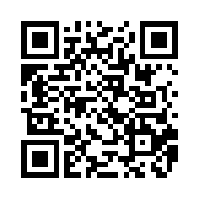Abstract
The concept woman: A feminist historiography of the relation between female and male. This article analyses the presuppositions underlying the feminist philosopher Prudence Allen’s important book, The concept of woman, on the history of the idea of woman and women’s relation to the other sex. Following the method of the history of ideas, she investigates the viewpoints of about 60 male and female western thinkers during 750 BC – AD 1250. She distinguishes three basic models in the relation between female and male, viz. gender unity, polarity and complementarity. The writer of his article, however, highlights apart from other queries, two major problems with her historiography. Firstly, she does not indicate clearly enough how different ontic-anthropological philosophical starting points determined the differing viewpoints on the two genders. Secondly, instead of accepting a norm from outside, she looks for a directive on the relation between male and female (in a subjectivist way) in the relation itself. Such an approach is the consequence of her dualistic division between a supposed neutral philosophy and Christian theology. She also does not succeed to apply her nature-grace and philosophy-theology distinction consistently in her review of history. Furthermore, Allen’s preference for the idea of complementarity is questioned. To stimulate further reflection, a few contemporary protestant views on the same issue are pointed out. In conclusion a follow-up contribution is envisaged which will indicate that a consistent problem-historical method of philosophical historiography may provide answers to the two main shortcomings identified in Allen’s otherwise captivating and ground-breaking study.
Copyright information
- Ownership of copyright in terms of the Work remains with the authors.
- The authors retain the non-exclusive right to do anything they wish with the Work, provided attribution is given to the place and detail of original publication, as set out in the official citation of the Work published in the journal. The retained right specifically includes the right to post the Work on the authors’ or their institutions’ websites or institutional repositories.
Publication and user license
- The authors grant the title owner and the publisher an irrevocable license and first right and perpetual subsequent right to (a) publish, reproduce, distribute, display and store the Work in any form/medium, (b) to translate the Work into other languages, create adaptations, summaries or extracts of the Work or other derivative works based on the Work and exercise all of the rights set forth in (a) above in such translations, adaptations, summaries, extracts and derivative works, (c) to license others to do any or all of the above, and (d) to register the Digital Object Identifier (DOI) for the Definitive Work.
- The authors acknowledge and accept the user licence under which the Work will be published as set out in https://creativecommons.org/licenses/by/4.0/ (Creative Commons Attribution License South Africa)
- The undersigned warrant that they have the authority to license these publication rights and that no portion of the copyright to the Work has been assigned or licensed previously to any other party.
Disclaimer: The publisher, editors and title owner accept no responsibility for any statement made or opinion expressed by any other person in this Work. Consequently, they will not be liable for any loss or damage sustained by any reader as a result of his or her action upon any statement or opinion in this Work.
In cases where a manuscript is NOT accepted for publication by the editorial board, the portions of this agreement regarding the publishing licensing shall be null and void and the authors will be free to submit this manuscript to any other publication for first publication.
Our copyright policies are author-friendly and protect the rights of our authors and publishing partners.

